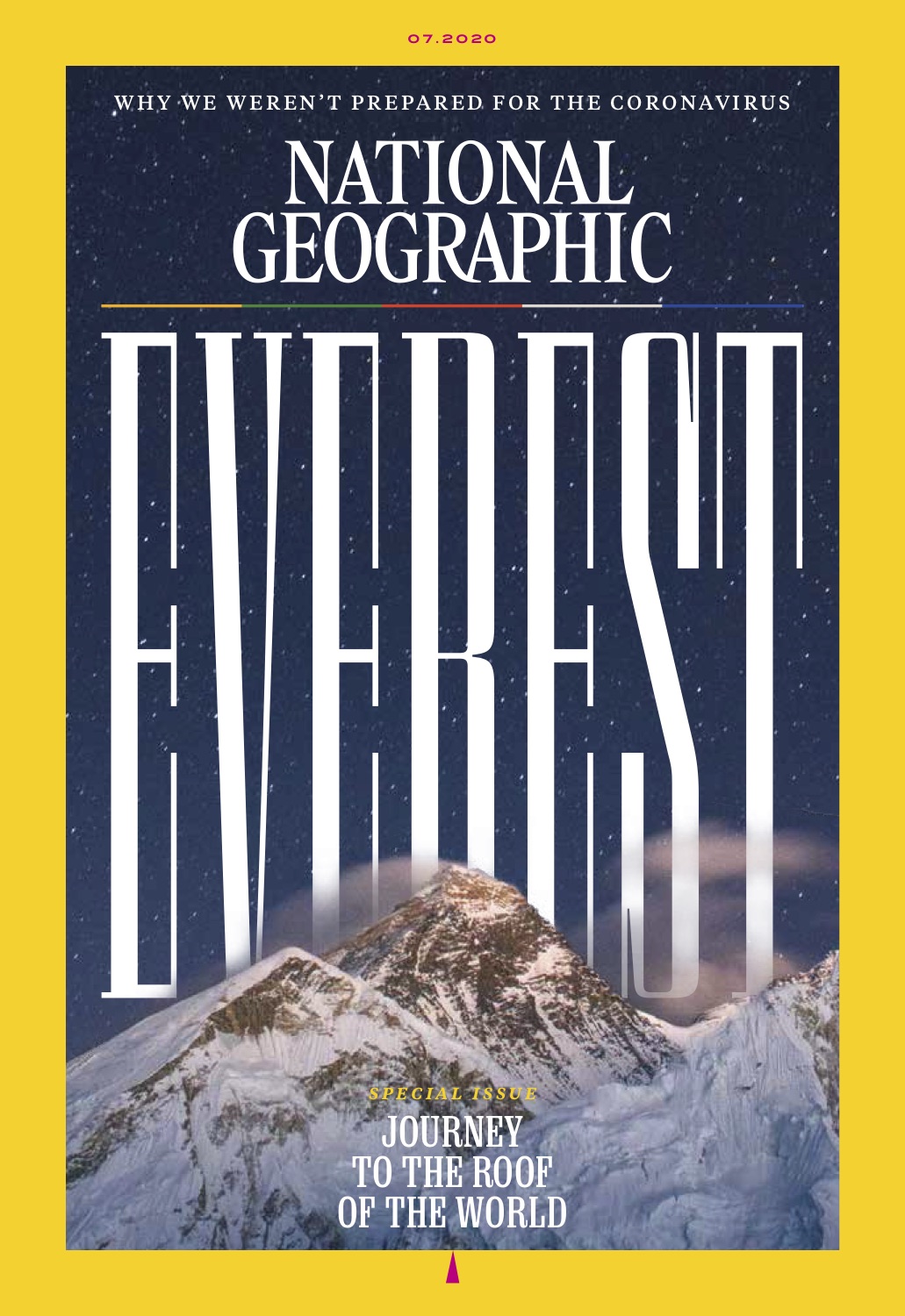Look for the July issue online now at natgeo.com/mounteverest and on print newsstands June 30.
Lost on Everest premieres on National Geographic Channel on Tuesday, June 30, at 9/8c followed by Expedition Everest at 10/9c.
Season 3 of Overheard at National Geographic premieres on June 16. Listen to the first episode on artificial glaciers in the Himalayas at natgeo.com/overheard

MYSTERY ON EVEREST
By Mark Synott; photos by Renan Ozturk
- EVEREST NORTHSIDE: Nearly a century ago, Andrew “Sandy” Irvine and George Mallory vanished on Everest. Did they make it to the top, 29 years before Edmund Hillary and Tenzing Norgay were celebrated as the first to scale the world’s highest peak? This feature explores author Mark Synott and his team’s journey to retrace Irvine’s steps to try to find his body—and the camera that could rewrite the story of the mountain.
- AVAILABLE:
- Interviews with professional American rock climber and author Mark Synott
- Interviews with documentary filmmaker and photographer Renan Ozturk
- Stunning images of the journey to the highest peak in the world, Mt. Everest
THE LOOMING CRISIS OVER WATER
By Alice Albinia; photos by Brendan Hoffman
- HIMALAYA WATER TOWER: The Indus, one of the world’s mighty rivers, depends on glaciers in the Himalaya and neighboring ranges to release a steady flow of ice melt in the spring and summer. It supports some 270 million people. This feature examines the impact of climate change due to global warming. Because of this warming, the glaciers will shrink and the flow in the river will decline beginning around 2050, putting millions at risk—and elevating tensions among India, Pakistan, and China.
- AVAILABLE:
- Colorful images of the people and community who rely on the Indus River
- Interviews with award-winning author Alice Albinia
MAKING GLACIERS IN NORTHERN INDIA
By Arati Kumar-Rao; photos by Ciril Jazbec
- ICE STUPAS: What do you do when the snows you depend on for water are melting too quickly, and glaciers have receded high into the mountains? This feature highlights how the people of Ladakh, in the northern tip of India, are dealing with climate change and creating huge cones of ice that give desperate farmers water when they need it.
- AVAILABLE:
- Interviews with National Geographic Explorer and author Arati Kumar-Rao
- Unique images of man-made glaciers
THE HIMALAYAS GHOST LEOPARDS
By Peter Gwin; photos by Prasenjeet Yadav, Frederic Larrey and Sandesh Kadur
- SNOW LEOPARDS: For millennia, snow leopards have haunted some of Central Asia’s most forbidding terrain— soaring cliffs, plunging gorges, high deserts. Here, thin air, deep snow, and subfreezing temperatures have allowed these obscure cats to elude the human gaze and disappear into the landscape like phantoms. This feature explores how conservation, camera traps, and now tourism are helping to track and view snow leopards.
- AVAILABLE:
- Interviews with National Geographic Editor at Large Peter Gwin
- Intimate images of ghost leopards in their natural habitat
A NEW WINDOW INTO THE WEATHER
By Freddie Wilkinson; photos by Mark Fisher
- WEATHER STATION: Climate scientists Baker Perry and Tom Matthews, along with a team of Sherpas, built an automatic weather station at the Balcony on Mount Everest in 2019. The station, sitting at 27,600 feet above sea level, is the highest ever installed—reaching the Sub-tropical Jet Stream, a band of powerful winds that circle the globe at high altitudes and are notoriously difficult to track. This feature takes a look the Everest expedition that built the world’s highest weather station
- AVAILABLE:
- Interviews with climate scientists Baker Perry and Tom Matthews
- Interview with professional climber and writer Freddie Wilkinson
- Breathtaking images of Mt. Everest